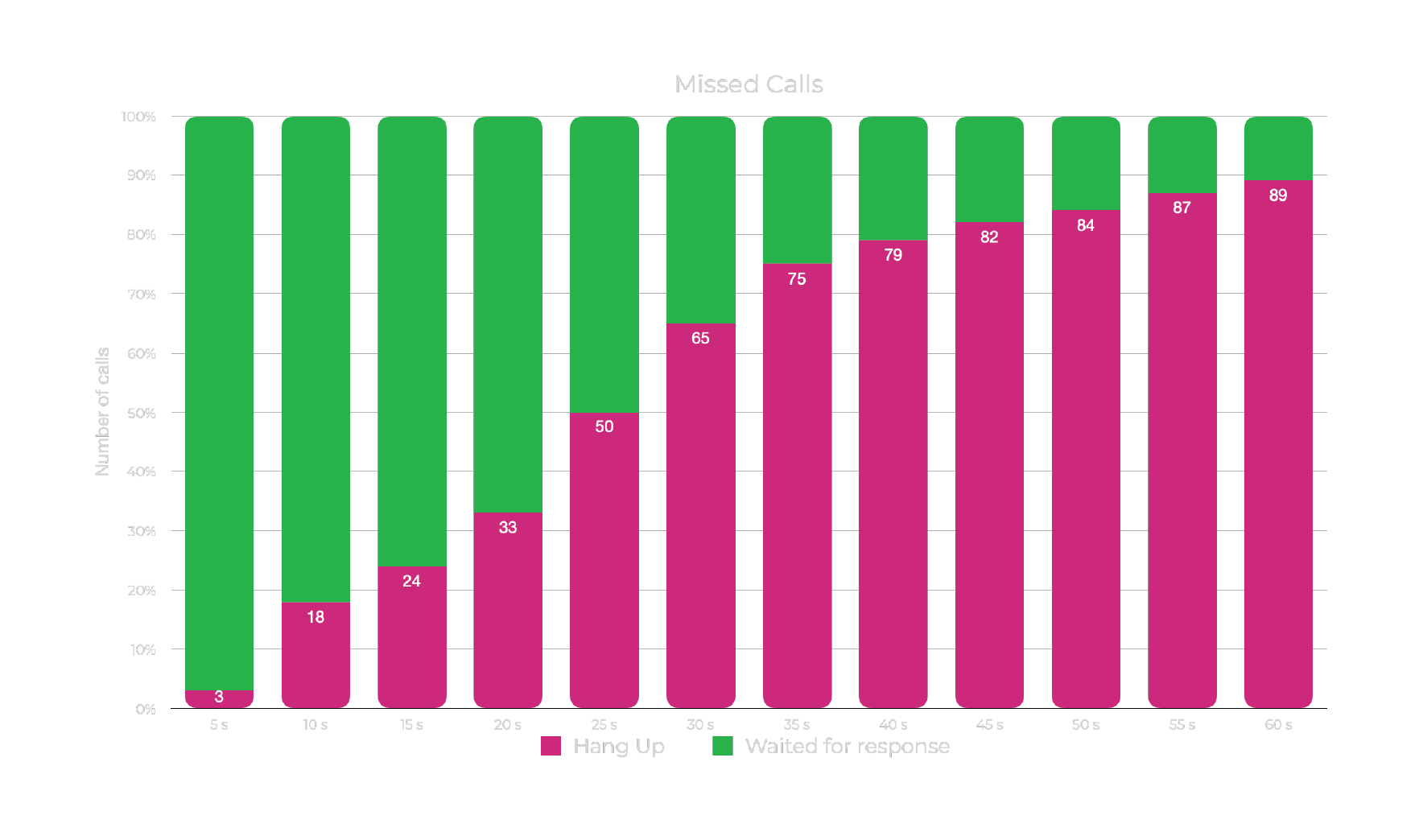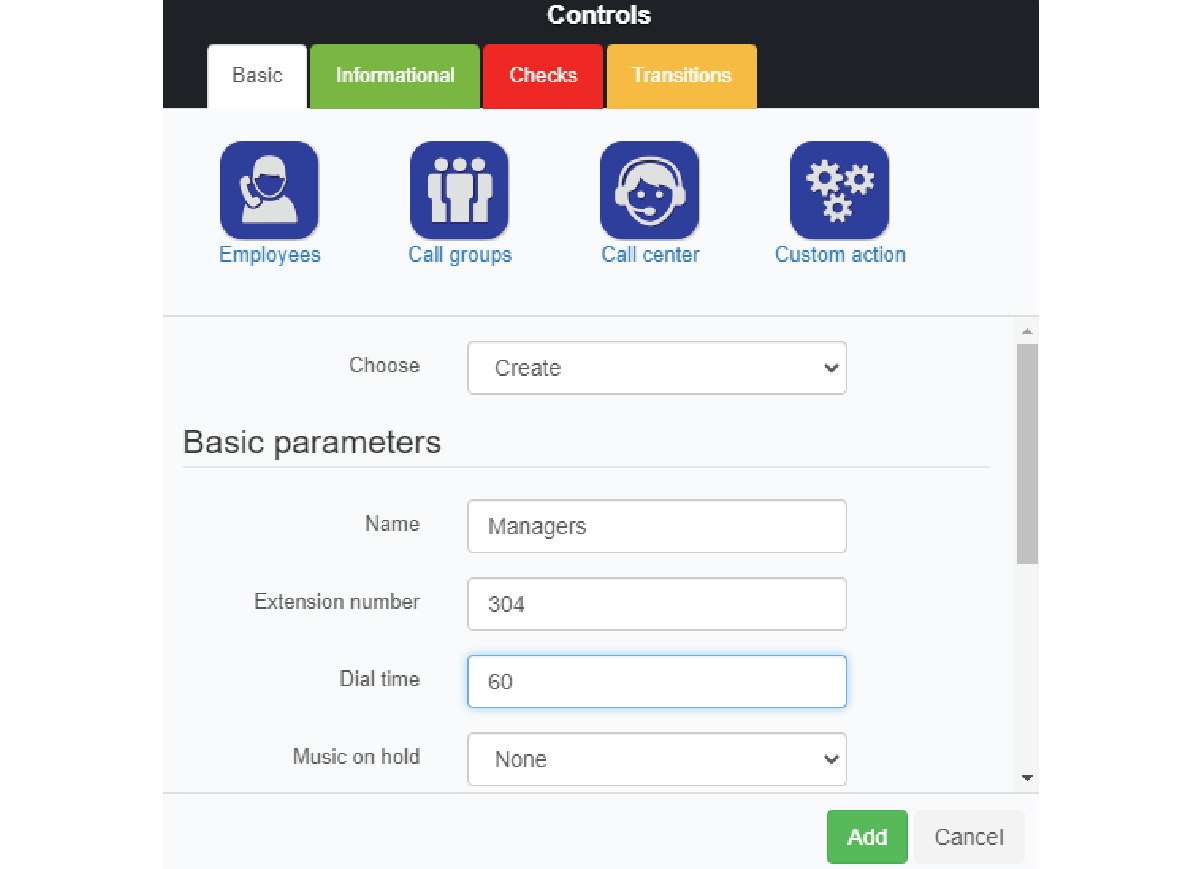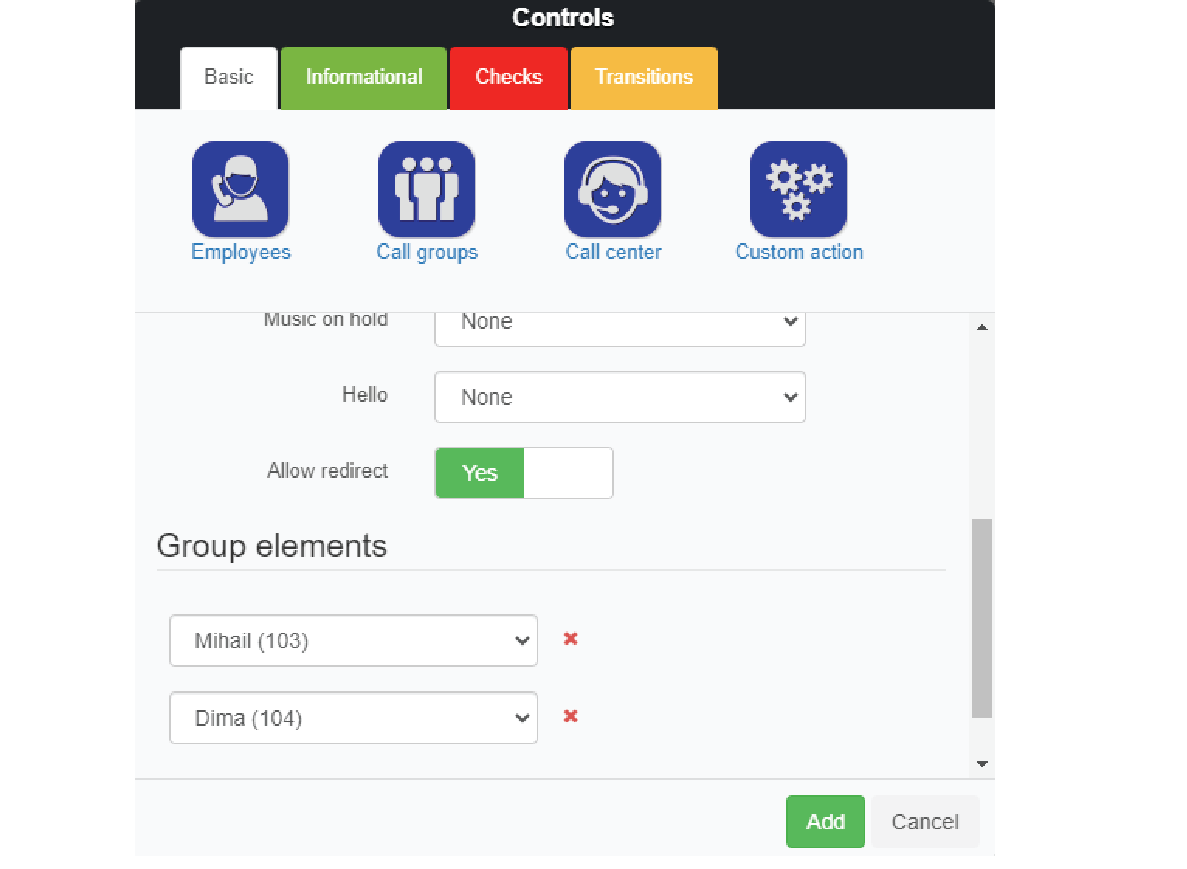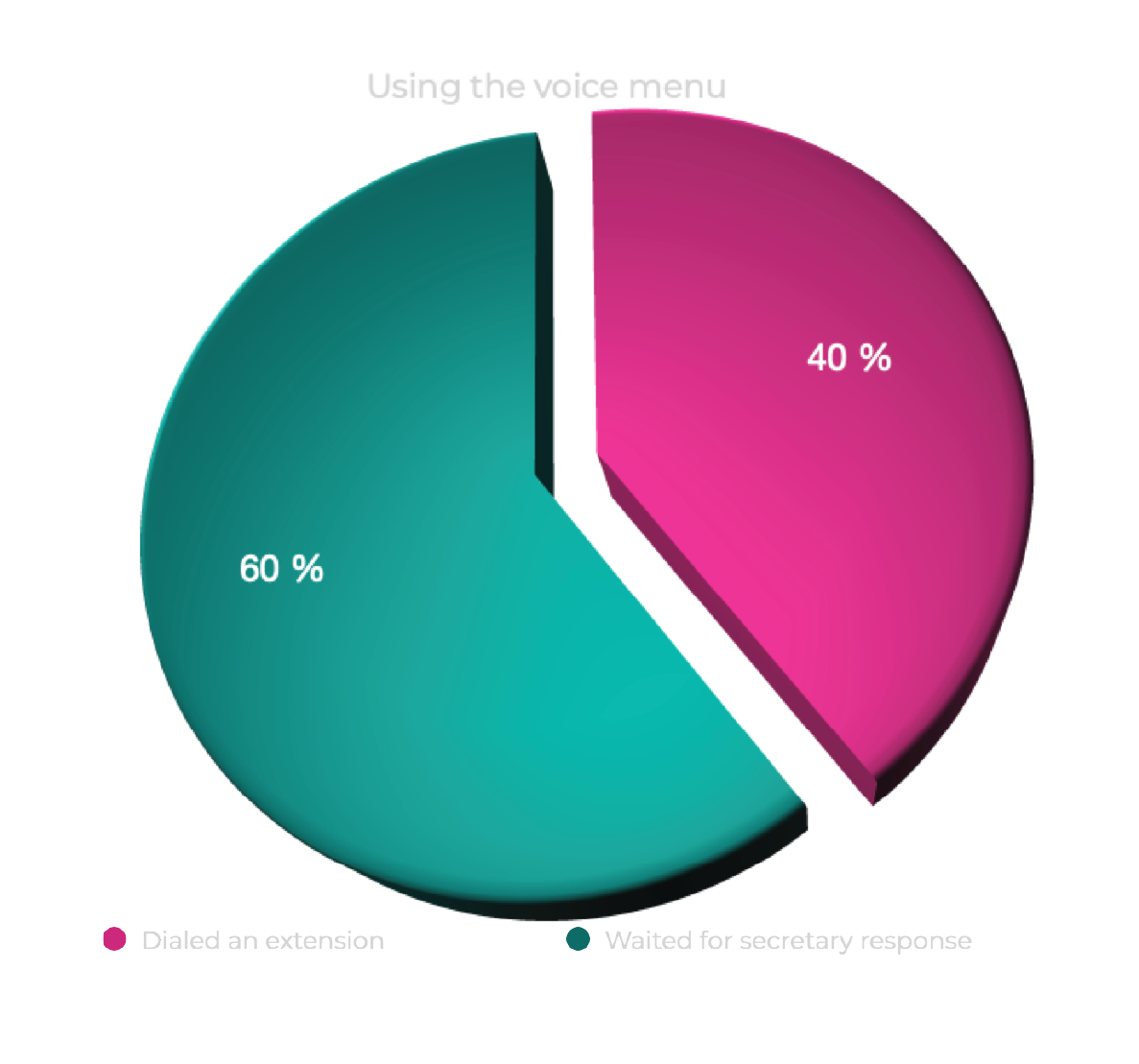Incoming Call Handling
Here, we will explore the main methods of handling incoming calls, along with their advantages and disadvantages. We hope that this will help you organize your knowledge and select the right call handling strategy. During this process, you'll need to find an acceptable balance between costs and benefits. Achieving this balance right away is unlikely. There are many reasons for this, including the specifics of conducting a particular type of business and the infamous "human factor."
Optimal results can be achieved, as previously mentioned, through a PDCA cyclic approach involving implementation, analysis, and subsequent correction of initial decisions. Statistical analysis of incoming calls and their handling plays a significant role in this process, informing the adjustment of handling scenarios and staff responsibilities.
Customer-Friendly Telephony
In a customer-oriented commercial company, telephony should primarily be convenient for customers, who always want to be served quickly and effectively. However, building a system that is highly convenient for customers often comes with additional costs. For instance, you might need to hire extra operators instead of offering a voice menu or setting up additional external lines to handle more calls.
The convenience of your phone system for customers directly influences how many of them you will convert into sales and profit.
To create a customer-friendly system, you need to understand your customer base and consider the specifics of your own business. Let's illustrate this with an example.
Consider the statistics of one of our customers who operate the RingoLine PBX, a taxi service. For such a business, promptly answering calls is crucial. Customers won't wait long for an operator to answer. Statistics show that over 20% of calls will be lost if not answered within the first 10 seconds. Almost nobody waits for an answer if it takes longer than a minute.

Therefore, when planning a system for such a business, scenarios that involve time-consuming interactions, like voice menus, should be avoided.
Another example involves systems that allow calling a specific subscriber (employee). If the employee is not available and the system takes a long time to route the call through other employees or to the secretary, the caller will likely hang up before getting an answer.
Selecting the optimal call handling scheme usually involves a combination of technical and organizational decisions.
Below, we will examine the factors influencing the choice of the optimal solution and the tools available to achieve economic benefits without unnecessarily draining resources.
Primary Incoming Call Handling Scenarios
Three common call distribution scenarios can be highlighted: broadcasting the call to an entire department (hunt), using a dedicated call center, and routing all calls to a secretary. Each of these approaches has its strengths and weaknesses. The RingoLine PBX can implement all of these scenarios.
Hunt Group (Broadcast to All). This is the simplest and most common method of distributing incoming calls. The PBX simply forwards the call to all phones in a group. The first participant who answers the call communicates with the customer.
Whether to answer the call or not is up to the employee, so with the right motivation and work atmosphere, high efficiency can be achieved. If the company has a system of motivating employees to answer more calls, a competitive effect among employees can be established, leading to faster response times.
A drawback of this scenario is that if something goes wrong, it's difficult to identify the cause. Reports might show that nobody answered the call, but the root cause might remain unclear. Perhaps some employees were unavailable, while others were genuinely busy and couldn't pick up. Alternatively, some employees might be reluctant to answer and were waiting for someone else to do so. Analyzing these causes falls under the organizational aspect of setting up your system, as technical means alone can't solve this problem.
Let's demonstrate the scenario's implementation using the RingoLine PBX:


Usage of a Call Center. In contrast to the previous scenario, a call center operator doesn't have the right to ignore a call. They should have no tasks other than call handling. Answering an incoming call must happen within a very short time (e.g., 5 seconds); otherwise, the call will be forwarded to another operator, and the current operator's efficiency metrics will suffer due to the call being marked as unanswered.
Calls missed by an operator are mostly the operator's fault, as in other cases (busy or away from the desk), the system sets an appropriate status. If an operator is away, they must inform the PBX. The PBX will then note the status change time in reports and won't send calls to the operator until they change their status again, indicating they are back at their desk.
This scheme allows for the most efficient use of your employees, assuming a high intensity of incoming calls. This solution is likely suitable for businesses like dispatch centers, online stores, taxi services, etc. However, it won't be effective with a low volume of incoming calls or if there's a high intensity of two-way communications between clients and specific employees.
Secretary Assistance. Another call handling scheme option is using a secretary. As a company grows and call volume increases, there might come a point where a secretary becomes indispensable. For example, if a company has 15 managers and receives an average of 300 calls per day, using the "Broadcast to All" scheme would mean each department manager's phone would ring roughly every 5 minutes. This could lead to employees either spending all their time transferring calls or ignoring them altogether.
A secretary, who knows the company's structure better, can quickly determine who the caller should be connected to or, if the employee is unavailable, where to forward the call or how to end the call while retaining the caller's contact.
To reduce the time spent on call handling, a secretary's workspace can be equipped with a separate phone terminal featuring quick dial buttons and busy line indicators. Additionally, a specially designed search query form within the corporate database can significantly save time when looking up an employee's name or phone number.
This scheme requires separate control, as the absence of a secretary can lead to missed incoming calls. Therefore, performance should be analyzed based on reports, and the optimal number of secretaries should be determined. To partially address the issue of call reception staff shortage, using a voice menu can help. However, as previously mentioned, this might decrease customer comfort and increase the number of missed calls.
To achieve the optimal balance between costs and customer comfort, these described schemes can be combined. For instance, calls could be directed to secretaries, and if they don't answer, they could be routed to a group (department). Within a group, certain employees could be assigned to answer calls first, and if they don't respond, calls could be directed to the entire department.
In any case, the scheme is chosen through an iterative process, where adjustments are made to existing schemes based on current performance analysis.
Key Elements of Call Handling Scheme
Voice Menu.
This is a self-service method where the PBX plays a message to the caller, such as "Press 1 to connect to the sales department, press 2 to connect to the support department," and redirects the call accordingly.
A voice menu can reduce the workload on a secretary and could even replace them in a small company. For instance, if your company handles calls between the technical support and a small sales department, you can easily set this up in a voice menu, allowing customers to select the call redirection direction themselves.
However, the voice menu shouldn't be too long or branching, as customers might not wait for their selection. This could be critical for your business, as customers might turn to a simpler-structured competitor if they don't receive an answer and grow impatient.

Voice Greeting.
Using a voice greeting like "Hello, you've reached the company..." is an image-enhancing element. However, it helps screen out wrong-number callers and robots checking for number availability.
You can combine the greeting with a voice menu. This allows your customers to dial an extension number during the greeting, shortening their wait time to connect with the desired employee.
If all your calls are routed to the sales department, and clients frequently request transfers to the warranty department or another department, utilize a voice menu and measure the outcomes. Evaluate the reduction in non-target calls to the sales department compared to the additional calls missed when using the voice menu.
Night Mode.
If you receive numerous calls during non-working hours, you can set up a "Night Mode." This involves additional settings in the phone system that allow you to establish a special greeting informing callers of the company's operating hours. You can also record an auto-attendant message, providing the option to return the call during working hours or redirect calls to specialized third-party call centers if there's an overflow of nighttime calls. This prevents losing such calls and converts them into productive customer interactions. This approach enhances the cost-effectiveness of your phone system.
Connecting to Personal Managers, Handling Follow-Up Calls.
If the nature of your business demands personalized customer interactions, you'll need a method to quickly and comfortably connect customers with the specific employee responsible for them.
One approach is to configure the system to automatically connect the caller to the employee they previously spoke with. This can be based on tracking repeat calls. This approach offers a significant advantage: the customer doesn't need to re-explain their issue, and the employee can get up to speed quickly. Of course, erroneous connections are not entirely avoidable.
Another approach involves integrating with CRM systems, where the caller's phone number can help identify not only the customer but also the manager assigned to them.
In any case, analyzing incoming call statistics should help you choose the right processing algorithm and optimize your phone system's performance.
To conclude, here's an example from real-world practice involving the optimization of incoming call reception for one of our clients.
The client, a business owner, initially believed that one dedicated secretary would be sufficient to handle customer calls for their office. Over time, while reviewing the office PBX statistics, the client noticed that a portion of incoming calls was regularly missed. The reason was the inability to handle incoming calls when the secretary was already on the phone or absent from her desk.
To address this issue, the client involved the managerial staff in handling incoming calls. This led to a situation where, in addition to their existing responsibilities related to their own clients, managers had to be informed about matters not directly pertaining to them in order to answer and forward calls correctly. As the level of awareness among managers varied, less informed individuals began distracting more informed ones with clarifying questions.
The solution was then adjusted: the most informed managers remained available for handling incoming calls, but with a lowered availability status. This meant calls were only directed to them when the secretary was occupied.
This scheme worked well until the need arose to separately handle calls from existing and new clients. In this scenario, calls from existing clients were automatically forwarded to the managers assigned to them, while all other calls were directed to the secretary.
Thus, through an iterative process of combining approaches based on analysis, the client achieved an acceptable percentage of answered calls without incurring additional costs.
Our final recommendations for configuring call handling schemes:
- Evaluate how long your customers are willing to wait for a response to their call.
- If the incoming call intensity is high, consider setting up a call center.
- If your employees complain about a high volume of calls from clients and colleagues disrupting their work, try implementing a voice menu or hire a dedicated secretary.
- If waiting time becomes critical, consider adding a voice menu.
- Use greetings and night mode – these can increase the conversion of missed calls.
- Connecting callers to their designated manager upon repeat calls can enhance customer comfort and alleviate the secretary's workload.
- And most importantly, continuously monitor and analyze call statistics. They will guide you in identifying mistakes and areas for improvement.

